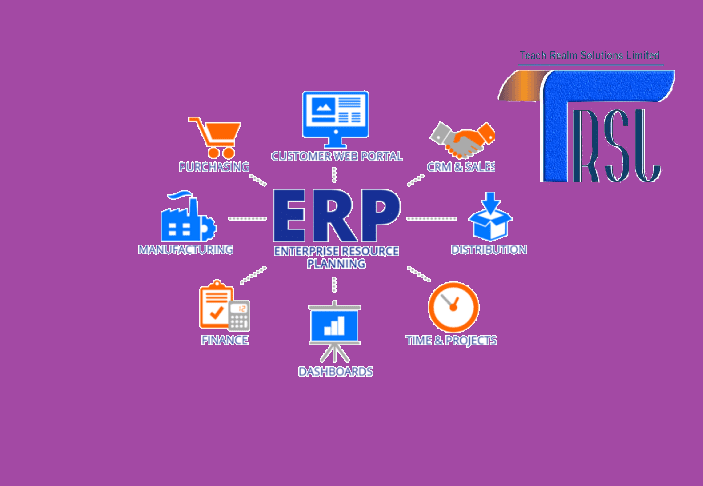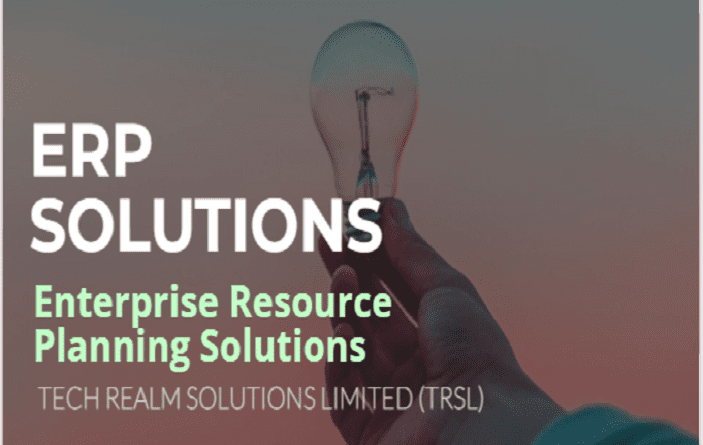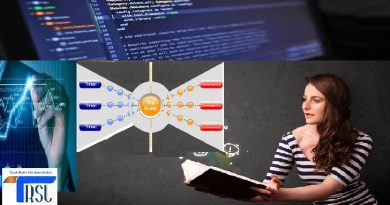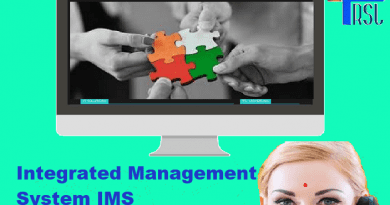Enterprise Resource Planning:
ERP Solutions
Enterprise Resource Planning Solutions:
Enterprise Resource Planning or ERP system is the integrated management of core business processes, often in real-time and mediated by software and technology. Enterprise Resource Planning is usually referred to as a category of business-management software — typically a suite of integrated applications—that an organization can use to collect, store, manage, and interpret data from these many business activities. Enterprise Resource Planning provides an integrated and continuously updated view of core business processes using common databases maintained by a database management system. ERP systems track business resources—cash, raw materials, production capacity—and the status of business commitments: orders, purchase orders, and payroll. The applications that make up the system share data across various departments (manufacturing, purchasing, sales, accounting, etc.) that provide the data. ERP facilitates information flow between all business functions and manages connections to outside stakeholders. Enterprise system software is a multibillion-dollar industry that produces components supporting a variety of business functions. IT investments have become the largest category of capital expenditure in worldwide-based businesses over the past decade. Though early ERP systems focused on large enterprises, smaller enterprises increasingly use ERP systems. The ERP system integrates varied organizational systems and facilitates error-free transactions and production, thereby enhancing the organization’s efficiency. However, developing an ERP system differs from traditional system development. ERP systems run on a variety of computer hardware and network configurations, typically using a database as an information repository.
ERP System covers the following common functional areas. In our ERP systems, these are called and grouped together as ERP modules:
- Finance & Accounting: General Ledger, Fixed Assets, payable including vouchering, matching and payment, receivables Cash Management and Collections, Cash Management, Financial Consolidation
- Management Accounting: Budgeting, Costing, Cost Management, Activity Based Costing
- Human resources: Recruiting, training, rostering, payroll, benefits, retirement and pension plans, diversity management, retirement, separation
- Manufacturing: Engineering, bill of materials, work orders, scheduling, capacity, workflow management, quality control, manufacturing process, manufacturing projects, manufacturing flow, product life cycle management
- Order Processing: Order to cash, order entry, credit checking, pricing, available to promise, inventory, shipping, sales analysis and reporting, sales commissioning.
- Supply chain management: Supply chain planning, supplier scheduling, product configurator, order to cash, purchasing, inventory, claim processing, warehousing(receiving, put away, picking and packing).
- Project management: Project planning, resource planning, project costing, work breakdown structure, billing, time and expense, performance units, activity management
- Customer relationship management: Sales and marketing, commissions, service, customer contact, call centersupport — CRM systems are not always considered part of ERP systems but rather Business Support systems (BSS).
- Data services: Various “self–service” interfaces for customers, suppliers and/or employees
ERP systems connect to real–time data and transaction data in a variety of ways. These systems are typically configured by systems integrators, who bring unique knowledge on process, equipment, and vendor solutions.
Direct integration—ERP systems have connectivity (communications to plant floor equipment) as part of their product offering. This requires that the vendors offer specific support for the plant floor equipment their customers operate. ERP vendors must be experts in their own products and connectivity to other vendor products, including those of their competitors.
Database integration—ERP systems connect to plant floor data sources through staging tables in a database. Plant floor systems deposit the necessary information into the database. The ERP system reads the information in the table. The benefit of staging is that ERP vendors do not need to master the complexities of equipment integration. Connectivity becomes the responsibility of the systems integrator.
Enterprise appliance transaction modules (EATM)—These devices communicate directly with plant floor equipment and with the ERP system via methods supported by the ERP system. EATM can employ a staging table, web services, or system–specific program interfaces (APIs). An EATM offers the benefit of being an off–the–shelf solution.
Custom–Integration Solutions—Many system integrators offer custom solutions. These systems tend to have the highest level of initial integration cost, and can have a higher long term maintenance and reliability costs. Long term costs can be minimized through careful system testing and thorough documentation. Custom–integrated solutions typically run on workstation or server-class computers.
Two-Tier ERP Software and Hardware lets companies run the equivalent of two ERP systems at once: one at the corporate level and one at the division or subsidiary level. For example, a manufacturing company could use an ERP system to manage across the organization using independent global or regional distribution, production or sales centers, and service providers to support the main company’s customers. Each independent center or subsidiary may have its own business models, workflows, and business processes.
Given the realities of globalization, enterprises continuously evaluate how to optimize their regional, divisional, and product or manufacturing strategies to support strategic goals and reduce time-to-market while increasing profitability and delivering value. With two-tier ERP, the regional distribution, production, or sales centers and service providers continue operating under their own business model—separate from the main company, using their own ERP systems. Since these smaller companies’ processes and workflows are not tied to main company’s processes and workflows, they can respond to local business requirements in multiple locations.
Factors that affect enterprises’ adoption of two-tier Enterprise Resource Planning systems include:
- Manufacturing globalization, the economics of sourcing in emerging economies.
- Potential for quicker, less costly ERP implementations at subsidiaries, based on selecting software more suited to smaller companies.
- Extra effort, (often involving the use of Enterprise application integration) is required where data must pass between two ERP systems Two-tier ERP strategies give enterprises agility in responding to market demands and in aligning IT systems at a corporate level while inevitably resulting in more systems as compared to one ERP system used throughout the organization.




